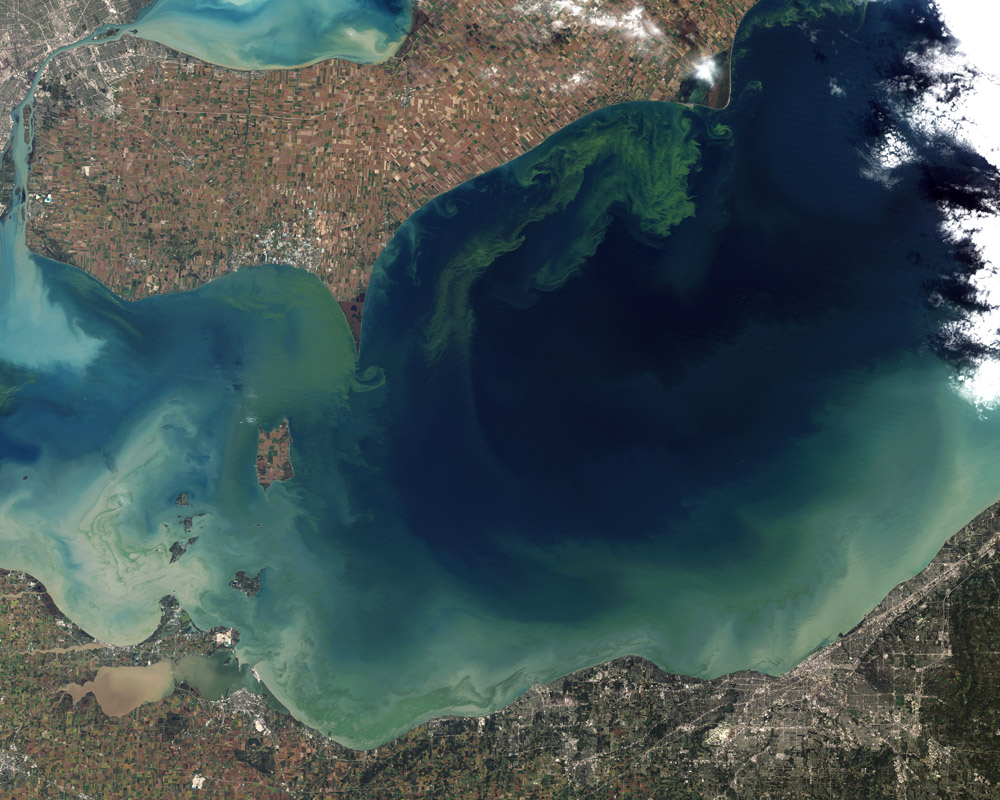
Planting the Seed of Sustainable Farming: Op-Ed

Suzy Friedman, sustainable agriculture director for the Environmental Defense Fund, contributed this article to LiveScience's Expert Voices: Op-Ed & Insights.
“Lake Erie is sick. A thick and growing coat of toxic algae appears each summer, so vast that in 2011 it covered a sixth of its waters, contributing to an expanding dead zone on its bottom, reducing fish populations, fouling beaches and crippling a tourism industry that generates more than $10 billion in revenue annually.” March 15, the New York Times.
The environmental devastation of Lake Erie is a tragedy. But it’s one that can be reversed. For a decade, the Environmental Defense Fund has been working with farmers and other partners in the Western Lake Erie Basin to reduce fertilizer and sediment runoff. We count on farmers to produce safe and abundant supplies of food, but it’s runoff from farmland that finds its way into the lake and is largely responsible for the devastating algae blooms described by the New York Times. [Why Lake Erie is Under Attack from Algae Blooms]
The key question is: How do we get enough farmers to practice sustainable agriculture so that algal blooms and dead zones — whether in Lake Erie or the Gulf of Mexico — become a thing of the past? How do we actually win?
The answer lies in convincing farmers that sustainable agriculture is not at odds with high yields and profitability. In fact, practices like more efficient use of fertilizer and the creation (or maintenance) of wetlands and buffer strips, which filter runoff before it can reach streams and rivers, can save farmers money and help improve the quality of their soil.
We call this combination of higher efficiency and filtering practices Growing Returns. It is part of EDF’s larger effort to advance a new era in conservation, one that rewards private landowners for protecting our natural resources. We want farmers and ranchers to be paid for providing benefits — healthy food, clean air and water and wildlife habitat — to all of society.
Meeting this challenge is not optional. We must have highly productive agriculture and healthy natural resources, because, quite simply, we all need to eat and we all need clean and abundant water.
Sign up for the Live Science daily newsletter now
Get the world’s most fascinating discoveries delivered straight to your inbox.
The power of the market
The power of the marketplace can help us reach that goal. Farmers need to know that the market will buy — or even prefer — sustainably grown crops. And who dominates the market? It’s the processors and brand-name companies like Kellogg’s, Coca-Cola, General Mills, Walmart and McDonald's. [Should You Buy Organic?]
With that in mind, the EDF has begun a three-part campaign for the adoption of sustainable agricultural practices, which includes:
- Creating supply: Building on our existing base of farmer networks and trusted farm advisers in a dozen states, and our relationship with a small cadre of influential farmers, we intend to rapidly expand the amount of cropland managed along Growing Returns guidelines.
- Creating demand: The goal is to work with retailers like Walmart, the nation’s largest grocery buyer, to develop buying programs that give preference to agricultural products grown in ways that reduce environmental impacts.
- Easing the way: Collaborating with scientific experts, technology companies and agribusinesses to make it easier, less time-consuming, and less expensive for farmers to produce high yields using more efficient and sustainable practices.
None of this will be easy. For example, it will take time and plenty of trial and error before big companies, farmers and all the middlemen between them learn how to work together. But the payoff — the size of the environmental win in terms of reducing greenhouse gas emissions and reducing algal blooms linked to agriculture — is huge.
The views expressed are those of the author and do not necessarily reflect the views of the publisher.










